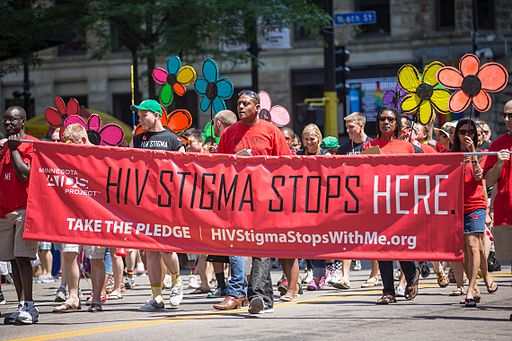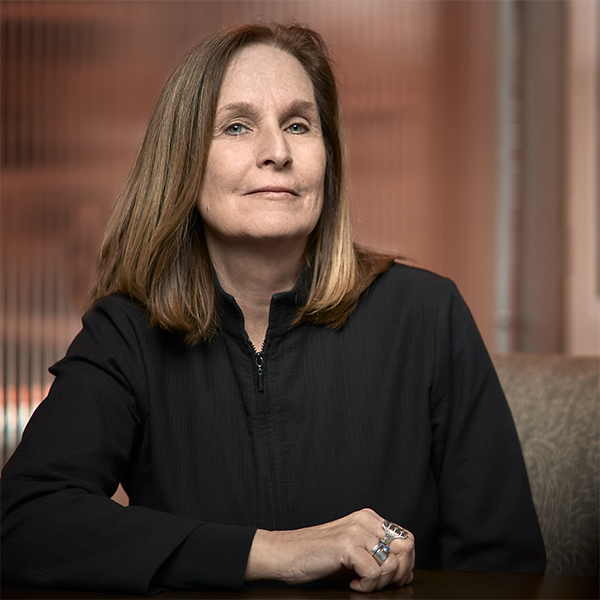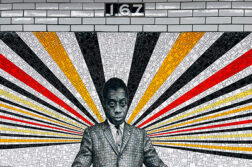
This is where my story begins. It’s 1993. Two friends of mine die of AIDS. The first death, that of Bruce, my best friend, shatters me so much I can’t attend the funeral of the second, who dies two months later. If I’m honest, I didn’t go because I am still struggling with guilt about the first one.
Or maybe the story begins earlier. At my kitchen table, I’m writing a short story—it’ll be my first to be published, in the seminal gay magazine Christopher Street—when my phone rings. It’s a friend of Bruce’s, a woman I don’t like because she always dramatically compares her illness (Chronic Fatigue Syndrome) to Bruce’s. I think it’s as comparable as a Saturday afternoon sledding with the kids to the Olympics luge. She’s just gotten off the phone with Bruce because he was having a nosebleed. I dismiss her fear out of hand, telling her that he’s had several nosebleeds ever since his doctors had put him on AZT. I’m irritated, more with myself than with her. I’d usually never pick up the phone when writing, but something, some electrical charge in the air compelled me to reach for the phone.
“He’ll be fine,” I tell her when she says she called him back and there was no answer. “He’s probably lying down with a bunch of tissues stuffed up his nose. Would you answer the phone like that?”
I go back to writing. Thirty minutes later, my phone rings again. Expecting that same woman, I snap, “Look, I’ll call him in a minute.” But it’s not her. It’s a nurse. A massive brain hemorrhage has already killed Bruce.
* * *
Flashback to the summer before all of this happens: I’m having coffee with my second friend, James, at a café in Provincetown. James is also a writer. He’d studied with Edmund White at Brown. But now he has AIDS and is afraid his finished novel, his thesis, won’t be published in time. Sitting across from me at the table, he points at the Kaposi’s lesion on his face and tells me he’s no longer interested in hiding them, in being a recluse in his closet-sized apartment. “Fuck it,” he says. Then he gestures at a group of gay men standing across the street in front of the Post Office steps, the spot for cruising in those years.
“The ones on the fringe have HIV or AIDS. The ones inside the circle are healthy,” he says. “It’s the pecking order now.”
Three years later, I will publish “The Pecking Order” in A&U: America’s AIDS Magazine. It’s my love song to James. Then, I will write “Fossil,” a story about a twenty-something woman who goes to NYC to take care of a childhood friend, a woman from whom she’s estranged and who has AIDS. This is followed by other AIDS stories. Now, this spring my novel, What We Give, What We Take, will be released. It tells the story of a detached, straight man on the run from a crime who ends up living with a gay man dying of AIDS.
Somewhere along these years, I’ve made a conscious decision to keep writing stories with characters that have AIDS.
“But why?” someone asked me once at a pre-COVID party when the other question I dread also came up: What do you write about? It’s akin to asking someone what your childhood was like. Which part do you highlight? What’s the best pull quote?
Isn’t HIV pretty much easy to manage at this point anyway? someone else asked.
Well, no. There are life-zapping side-effects from the drugs. Strict adherence to pills for the rest of your life. Drug resistance. Depression. And people still die from it. I tick these off like they’re items on a list of chores. Then I lower the boom. “Did you know that 1,189,700 million people aged thirteen and older were HIV+ in the U.S. in 2019?” My precision stuns them into silence.
But silence isn’t what I want. Nor was it what all the ACT UP protesters wanted either. If you were living in a cave or weren’t alive then, you’ve only to read Sarah Schulman’s Let the Record Show: A Political History of ACT UP New York, 1987-1993 to learn about “Silence=Death” and what those years were like.
What I really want to tell those naïve partygoers is: it’s all fun and games until someone dies. Perhaps that’s why I continue to write the stories about these characters who keep ringing my doorbell at ungodly hours, clamoring to be heard. Perhaps it’s James’ voice breaking my heart with his story of the pecking order. Or that the stigma, the hatred (both internally and externally directed) continues to this day, almost thirty years after James died. Perhaps it’s because I still feel guilty for not picking up the phone, although that wouldn’t have changed the outcome for my best friend. Their stories are my story.
Maybe it’s simply that such stories should be heard. Andrew Holleran is releasing his first novel in thirteen years, and according to its description, The Kingdom of Sand “features a nameless narrator who has survived the death of his friends to AIDS and the loss of his parents to old age and tragedy.”
And so, more stories with AIDS characters will begin, pen to paper, fingers to keyboard, and will be read and heard and loved.
At Bruce’s wake, I read from Holleran’s first novel, Dancer from the Dance, about the utter joy of dancing, something Bruce threw himself into with marvelous abandon, arms akimbo, hips swaying, fingers snapping as if it were his last whenever we went club-hopping in Boston.
That joy: this is where my story truly begins.
Randi Triant is the author of the novels What We Give, What We Take (April 2022), The Treehouse, selected as an AfterEllen ultimate summer read, and A New Life. She has taught writing at Boston College and Emerson College, and lives with her wife in Massachusetts.






